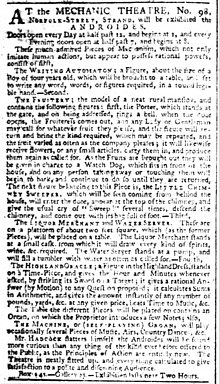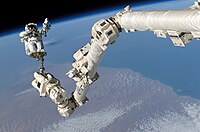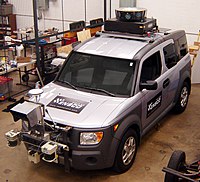-
Use Cases
-
Resources
-
Pricing
Ancient Automata
Han Zhile's automata in ancient China
800 - 899
% complete
Han Zhile, a Japanese who moved to China in the 9th century CE, created well-documented automata, contributing to the development of automata in ancient China.
Su Song's Cosmic Engine with mechanical mannequins
1088 CE
% complete
The Cosmic Engine, a clock tower built by Su Song in China, featured mechanical mannequins that chimed the hours, showcasing advancements in automata technology.
Image source: Automaton

Renaissance and Enlightenment
Introduction of water clocks modeled on Arabic designs in Europe
1000 CE
% complete
The first water clocks modeled on Arabic designs were constructed in Europe around 1000 CE, showcasing the exchange of knowledge between Muslim and Christian societies.
Image source: Water clock

Translation of Hero's works on automata into Latin
1100 - 1199
% complete
Hero's works on automata were translated into Latin during the 12th-century Renaissance, contributing to the dissemination of knowledge about automata in Europe.
Image source: Hero of Alexandria

Robert II's pleasure garden with robots
1200 - 1299
% complete
Robert II, Count of Artois, built a pleasure garden at his castle that incorporated humanoid and animal robots, showcasing the use of automata for entertainment.
Al-Jazari's segmental gears in European clocks
1206
% complete
The segmental gears described by Al-Jazari in his book appeared in the most advanced European clocks 100 years later, showcasing the transmission of knowledge and advancements in clockwork mechanisms.
Image source: Ismail al-Jazari

Popularity of automated bellstrikers in Europe
1300 - 1399
% complete
Automated bellstrikers called jacquemart became popular in Europe alongside mechanical clocks in the 14th century, showcasing the integration of automata in public spaces.
Leonardo da Vinci's humanoid drawing
1495
% complete
Leonardo da Vinci drew one of the first verifiable humanoid robots around 1495, showcasing his vision and imagination for mechanical figures.
Rene Descartes' belief in animals and humans as machines
1600 - 1699
% complete
Rene Descartes, a 17th-century thinker, believed that animals and humans were biological machines, contributing to the philosophical understanding of mechanistic views of life.
Jacques de Vaucanson's automated duck
1700 - 1799
% complete
Jacques de Vaucanson built an automated duck with hundreds of moving parts in the 18th century, showcasing his mastery in creating complex mechanical figures.
Image source: Jacques de Vaucanson

Publication of "L'homme machine" by Julien Offray de La Mettrie
1747
% complete
Julien Offray de La Mettrie anonymously published "L'homme machine" in 1747, exploring the idea of humans as machines and referencing Vaucanson as a "new Prometheus."
Image source: Man a Machine

Creation of moving automata by Pierre Jaquet-Droz
1770 - 1779
% complete
Pierre Jaquet-Droz created moving automata that resembled children in the 1770s, inspiring Mary Shelley's novel Frankenstein.
Image source: Jaquet-Droz automata

Modern Robotics
Publication of "Karakuri Zui"
1796
% complete
The landmark text "Karakuri Zui" was published in 1796, documenting various mechanical devices and automata, contributing to the development of robotics in Japan.
Image source: Japanese clock

Hisashige Tanaka's complex mechanical toys in Japan
1800 - 1899
% complete
Hisashige Tanaka, known as "Japan's Edison," created complex mechanical toys in the 19th century, showcasing Japan's contributions to the field of robotics.
Image source: Tanaka Hisashige

Introduction of telekino by Leonardo Torres Quevedo
1903
% complete
Leonardo Torres Quevedo introduced the telekino, a radio-based control system, in 1903, paving the way for remote-controlled machines.
Testing of telekino in an electrical land vehicle
1905
% complete
In 1905, Torres conducted initial telekino testing in an electrical three-wheeled land vehicle, showcasing advancements in remote control technology.
Demonstration of telekino-controlled boat
1906
% complete
In 1906, Leonardo Torres Quevedo demonstrated the telekino by guiding a boat from the shore with people on board, showcasing the potential of remote control technology.
Construction of the first autonomous chess-playing machine
1912
% complete
Leonardo Torres Quevedo built the first truly autonomous machine capable of playing chess in 1912, showcasing advancements in artificial intelligence and automation.
Proposal of machine that makes "Judgments" by Leonardo Torres Quevedo
1914
% complete
In his 1914 paper, Leonardo Torres Quevedo proposed a machine that makes "judgments" using sensors, manipulative parts, power sources, and captured information, contributing to the concept of autonomous decision-making machines.
Image source: Leonardo Torres Quevedo

Introduction of the term "Robot" in the play R.U.R
1921
% complete
The term "robot" was first used in the play R.U.R. by Karel Čapek in 1921, popularizing the term and its association with humanoid machines.
Image source: Robot

Introduction of Televox by Westinghouse Electric Corporation
1926
% complete
Westinghouse Electric Corporation built Televox in 1926, an early robotic device connected to various devices that users could control, showcasing early advancements in remote control technology.
Image source: Intrado

Release of Fritz Lang's Metropolis with Maschinenmensch
1927
% complete
Fritz Lang's Metropolis, released in 1927, featured the Maschinenmensch, the first humanoid robot depicted on film, showcasing the cultural fascination with robots.
Image source: Metropolis (1927 film)

Presentation of famous Japanese robotic automaton
1927
% complete
The most famous Japanese robotic automaton was presented to the public in 1927, showcasing Japan's contributions to the field of robotics.
Exhibition of one of the first humanoid robots in London
1928
% complete
One of the first humanoid robots was exhibited at the annual exhibition of the Model Engineers Society in London in 1928, showcasing early advancements in humanoid robotics.
Image source: Humanoid robot

Konrad Zuse's construction of the first programmable electromechanical computer
1939
% complete
Konrad Zuse constructed the first programmable electromechanical computer in 1939, laying the foundation for the development of humanoid machines that are now deemed robots.
Image source: Z3 (computer)

Appearance of Elektro, the humanoid robot, at the World's Fair
1939
% complete
Elektro, a humanoid robot, appeared at the World's Fair in 1939, captivating audiences and showcasing advancements in robotics technology.
Image source: Elektro

Formulation of the Three Laws of Robotics by Isaac Asimov
1941 - 1942
% complete
Isaac Asimov formulated the Three Laws of Robotics in 1941 and 1942, providing ethical guidelines for the behavior of robots and influencing the field of robotics.
Image source: Three Laws of Robotics

Use of the human central nervous system in controlling weapons
1943
% complete
Arturo Rosenblueth, Norbert Wiener, and Julian Bigelow adopted the human central nervous system as a control paradigm for automatic weapons systems in 1943, influencing the development of robotic systems.
Image source: Management cybernetics

Publication of "As We May Think" by Vannevar Bush
1945
% complete
Vannevar Bush published "As We May Think" in 1945, exploring the potential of electronic data processing and its impact on society, including advancements in robotics.
Image source: As We May Think

Creation of a team to develop bio-inspired machine operation
1946
% complete
Warren McCulloch gathered a team of mathematicians, computer engineers, physiologists, and psychologists in 1946 to work on machine operation using biological systems as a starting point, contributing to the development of robotics.
Image source: Cybernetics

Creation of the first electronic autonomous robots by William Grey Walter
1948 - 1949
% complete
William Grey Walter created the first electronic autonomous robots, Elmer and Elsie, between 1948 and 1949, showcasing significant advancements in robotics technology.
Emergence of robots as popular comic book characters in Japan
1950 - 1959
% complete
Robots became popular comic book characters in Japan during the 1950s, reflecting the cultural fascination with and integration of robots in Japanese society.
Image source: Mecha

El Ajedrecista defeats Savielly Tartakower
1951
% complete
El Ajedrecista, an autonomous chess-playing machine, defeats Savielly Tartakower at the Paris Cybernetic Congress in 1951, showcasing the capabilities of early robotic systems.
Image source: El Ajedrecista

Introduction of Unimate, the first digitally operated and programmable robot
1954
% complete
George Devol invented Unimate in 1954, the first digitally operated and programmable robot, marking a significant milestone in the development of the modern robotics industry.
Demonstration of computer-assisted manufacturing by MIT researchers
1959
% complete
Researchers at the Massachusetts Institute of Technology (MIT) demonstrated computer-assisted manufacturing in 1959, showcasing the integration of computers and robotics in industrial processes.
Image source: Computer-aided manufacturing

Installation of the first Unimate robot in a General Motors plant
1961
% complete
The first Unimate robot was installed in a General Motors plant in 1961, marking the first use of a working robot in an industrial assembly line.
Image source: Unimate

Development of the Rancho Arm for handicapped patients
1963
% complete
The Rancho Arm, a computer-controlled robotic arm, was developed to assist handicapped patients at the Rancho Los Amigos Hospital in 1963, showcasing the potential of robotics in healthcare.
Image source: Rancho Los Amigos National Rehabilitation Center

Proposal of the McNamara Line
1966
% complete
In 1966, the McNamara Line was proposed as a defense system that required minimal ground forces, showcasing the integration of technology, including robotics, in military strategies.
First productive use of an industrial robot in Japan
1967
% complete
In 1967, the first industrial robot was put to productive use in Japan, revolutionizing manufacturing processes and paving the way for further advancements in industrial robotics.
Image source: Industrial robot

Creation of the Tentacle Arm by Marvin Minsky
1968
% complete
Marvin Minsky created the Tentacle Arm in 1968, a computer-controlled robotic arm with 12 joints powered by hydraulics, showcasing advancements in robotic arm technology.
Image source: Marvin Minsky

Creation of the Stanford Arm by Victor Scheinman
1969
% complete
Victor Scheinman, a mechanical engineering student, created the Stanford Arm in 1969, recognized as the first electronic computer-controlled robotic arm, showcasing advancements in robotic arm technology.
Image source: Victor Scheinman

Creation of Shakey, the first mobile robot capable of reasoning
1970
% complete
Shakey, built by the Stanford Research Institute in 1970, was the first mobile robot capable of reasoning about its surroundings, contributing to the development of intelligent robotic systems.
Image source: Shakey the robot

Use of laser-guided bombs during Operation Linebacker
1972
% complete
Laser-guided bombs proved effective during the 1972 Operation Linebacker, showcasing the integration of precision-guided technology in military operations.
Image source: Laser-guided bomb

Completion of WABOT-1, the world's first full-scale humanoid intelligent robot
1972
% complete
Waseda University completed WABOT-1 in 1972, the world's first full-scale humanoid intelligent robot, showcasing significant advancements in humanoid robotics.
KUKA develops first industrial robot with six axes
1973
% complete
German-based company KUKA built the world's first industrial robot with six electromechanically driven axes, known as FAMULUS, in 1973, revolutionizing industrial automation.
Design of The Silver Arm by David Silver
1974
% complete
David Silver designed The Silver Arm in 1974, capable of fine movements replicating human hands, showcasing advancements in robotic arm technology.
Image source: Silver Star

Creation of the Selective Compliance Assembly Robot Arm (SCARA)
1978
% complete
The SCARA, a 4-axis robotic arm, was created in 1978, revolutionizing assembly lines with its efficiency and precision in picking up and placing parts.
Image source: SCARA

Successful crossing of a room full of chairs by the Stanford Cart
1979
% complete
The Stanford Cart successfully crossed a room full of chairs in 1979, showcasing advancements in autonomous navigation and obstacle avoidance capabilities.
Establishment of the Robotics Institute at Carnegie Mellon University
1979
% complete
The Robotics Institute at Carnegie Mellon University was founded in 1979, becoming a leading institution for research and education in robotics.
Image source: Robotics Institute

Creation of the first "Direct-drive arm" by Takeo Kanade
1981
% complete
Takeo Kanade created the first "direct-drive arm" in 1981, showcasing advancements in robotic arm technology and control mechanisms.
Image source: Takeo Kanade

Reveal of Wabot-2, capable of playing the organ
1984
% complete
Wabot-2, capable of playing the organ, was revealed in 1984, showcasing advancements in humanoid robotics and musical capabilities.
Image source: Android (robot)

Initiation of Honda's humanoid research and development program
1986
% complete
Honda began its humanoid research and development program in 1986, marking the company's commitment to creating robots capable of interacting successfully with humans.
Image source: ASIMO

Presentation of Genghis, a hexapodal robot, by MIT
1989
% complete
MIT revealed Genghis, a hexapodal robot, in 1989, showcasing advancements in legged locomotion and biomimicry in robotics.
Image source: Hexapod (robotics)

Clearance of a successful robot-assisted surgery appliance by the FDA
1994
% complete
In 1994, one of the most successful robot-assisted surgery appliances was cleared by the FDA, revolutionizing surgical procedures and improving patient outcomes.
Image source: Robot-assisted surgery

Introduction of the first teleoperated surgical system, AESOP
1994
% complete
AESOP, the first teleoperated surgical system, was introduced in 1994, showcasing advancements in robotic technology for surgical procedures.
Image source: Aesop

Creation of RoboTuna to study fish swimming
1996
% complete
RoboTuna, built by David Barrett in 1996, was a biomimetic robot designed to study fish swimming in water, contributing to the understanding of aquatic locomotion.
Image source: RoboTuna

Presentation of Honda's P2 humanoid robot
1996
% complete
Honda presented the P2 humanoid robot in 1996, showcasing advancements in humanoid robotics and interaction capabilities.
Landing of the Sojourner rover on Mars
Jul 4, 1997
% complete
The Sojourner rover, launched in 1996, landed on the surface of Mars on July 4, 1997, marking the first successful deployment of a mobile robot on another planet.
Reveal of Honda's P3 humanoid robot
1998
% complete
Honda revealed the P3 humanoid robot in 1998, showcasing advancements in humanoid robotics and mobility.
Introduction of AIBO, a robotic dog by Sony
1999
% complete
Sony introduced AIBO, a robotic dog capable of interacting with humans, in 1999, capturing the public's fascination with robotic companions.
Introduction of ASIMO, Honda's advanced humanoid robot
2000
% complete
Honda revealed ASIMO, the most advanced result of their humanoid project, in 2000, showcasing significant advancements in humanoid robotics and mobility.
Global estimate of industrial robots
Oct 2000
% complete
In October 2000, the United Nations estimated that there were 742,500 industrial robots in the world, highlighting the widespread use of robotics in various industries.
Launch of Canadarm2 for the International Space Station
Apr 2001
% complete
The Canadarm2 was launched into orbit and attached to the International Space Station in April 2001, showcasing the use of robotic systems in space exploration and maintenance.
Image source: Mobile Servicing System

Release of Roomba, a robotic vacuum cleaner
2002
% complete
iRobot released the Roomba, a robotic vacuum cleaner, in 2002, revolutionizing household cleaning and showcasing the integration of robots in everyday life.
Image source: Roomba

DARPA Grand Challenge with autonomous vehicle competition
2004
% complete
The DARPA Grand Challenge in 2004 saw the competition of 15 autonomous vehicles attempting to navigate a 150-mile off-road course, showcasing advancements and challenges in autonomous vehicle technology.
Image source: DARPA Grand Challenge

Landing of Mars rovers Spirit and Opportunity
Jan 3, 2004
% complete
The Mars rovers Spirit and Opportunity landed on the surface of Mars in January 2004, embarking on successful missions to explore the Red Planet and gather scientific data.
Image source: Mars Exploration Rover

Key Facts
- The ancient Greeks and Egyptians were among the first to develop mechanical devices that resembled robots.
- Leonardo da Vinci designed intricate mechanical machines that exhibited robotic-like qualities.
- The term 'robot' was coined in 1921 by Czech playwright Karel Capek in his play 'R.U.R'.
- The first digitally operated and programmable robot, Unimate, was created by George Devol and Joseph Engelberger in 1954.
- Modern robots are being used in a wide range of industries, including manufacturing, healthcare, and space exploration.
Source
This History of Robotics timeline was generated with the help of AI using information found on the internet.
We strive to make these timelines as accurate as possible, but occasionally inaccurates slip in. If you notice anything amiss, let us know at [email protected] and we'll correct it for future visitors.
Create a timeline like this one for free
Preceden lets you create stunning timelines using AI or manually.
Customize your timeline with one of our low-cost paid plans
Export your timeline, add your own events, edit or remove AI-generated events, and much more
Free
$
0
free forever
No credit card required.
Basic
$
10
/month
billed annually
Cancel anytime.
Pro
$
16
/month
billed annually
Cancel anytime.
Common Questions
Can I cancel anytime?
Yes. You can cancel your subscription from your account page at anytime which will ensure you are not charged again. If you cancel you can still access your subscription for the full time period you paid for.
Will you send an annual renewal reminder?
Yes, we will email you a reminder prior to the annual renewal and will also email you a receipt.
Do you offer refunds?
Yes. You can email us within 15 days of any payment and we will issue you a full refund.
What if I have more questions?
Check out our pricing docs or send us an email anytime: [email protected].